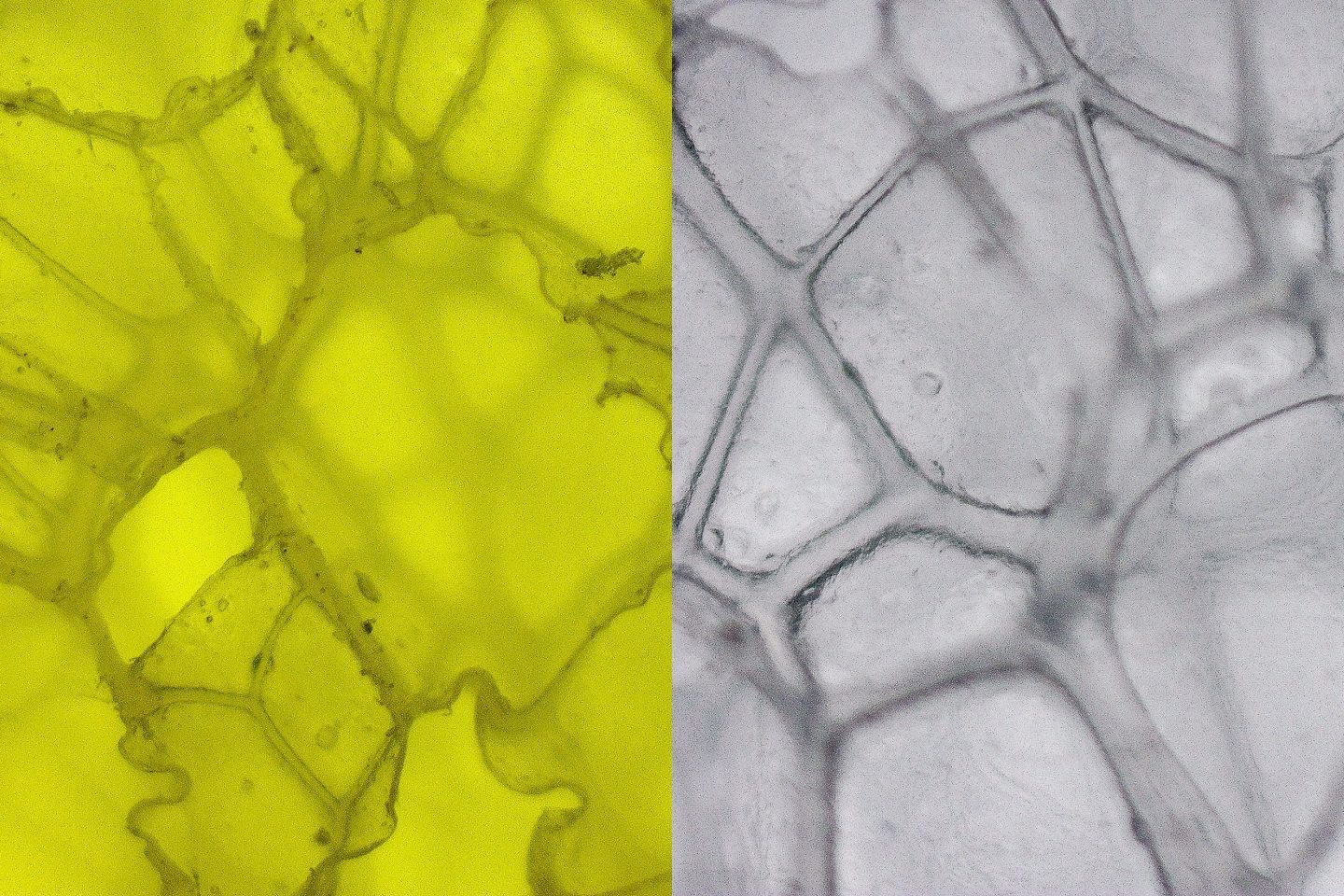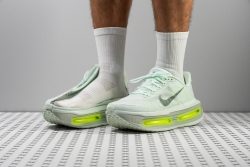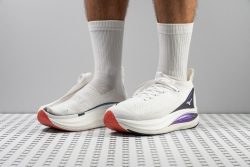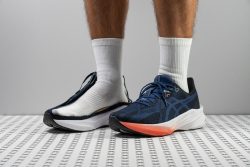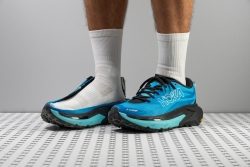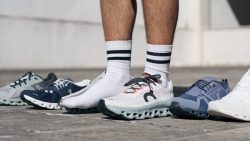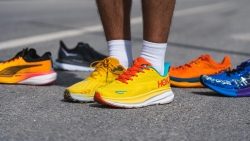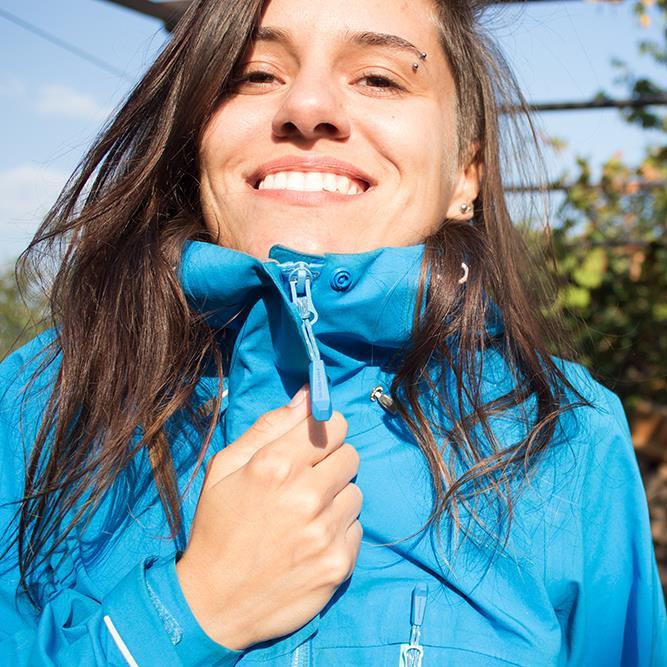7 Running Shoes With The Best Shock Absorption in 2025

We buy shoes ourselves. We earn commissions when you buy through us, at no extra cost. Why trust us
Shock absorption goes from very low to very high and in this guide, we focus on running shoes that have high shock absorption. Which runners can benefit the most from this feature? How is it any different from midsole softness? How to avoid cushioned running shoes that feel dull and tiring? We explain it all. In case you want to jump to the shoe recommendations immediately, look at our selection of top picks.
How we test Running shoes with the shock absorption
Before shoes enter the lab, we go through a process of deciding which shoes will be purchased and tested. On our Pipeline page, we laid out all the steps involved in this. When the shoe gets on our radar and is approved for purchasing, we do so with our own funds. We don't have sponsors, contracts with the brands, or brand ambassadors on the team.
The shoe is then tested both on the test runs and in our lab. All the lab tests are standardized (which we describe in great detail on the Methodology page). This standardization allows us to compare the lab test results because every shoe is tested the same way, under the same conditions. No variations, no excuses.
Once done with testing, we publish everything on our website. 30+ data points, along with the media and our personal experience with the shoe. This thorough testing allows us to select the best out of the best: we do exactly that and highlight these top picks in this guide.
Best high shock absorption running shoes overall
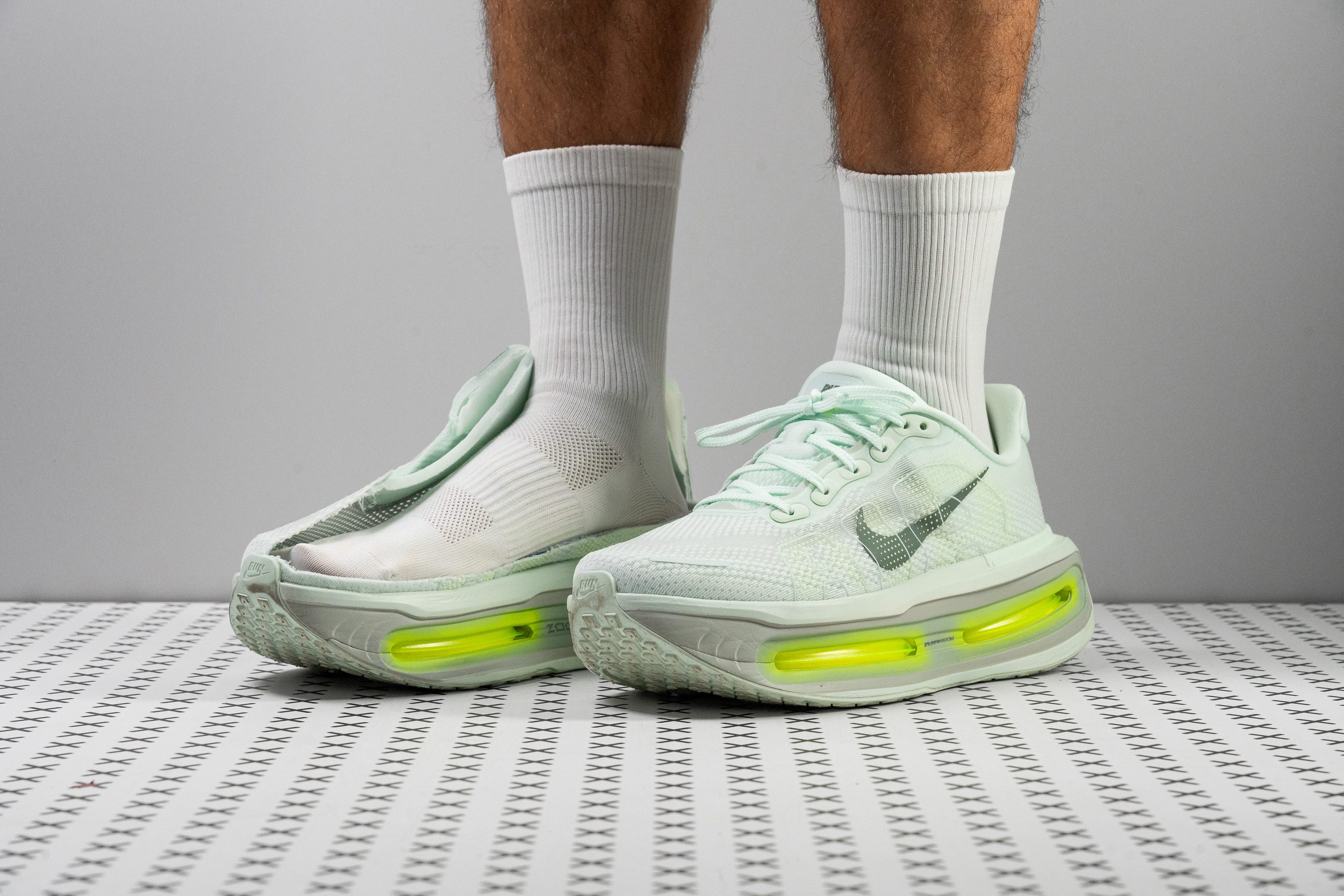




















































What makes it the best?
From our first step in the Nike Vomero Premium to its record-breaking numbers in the lab, it is truly deserving of its elite status. It offers deep cushioning and serious impact protection through its massive stack, offering the best shock absorption overall. What’s even more amazing is that it doesn’t forego responsiveness and stability even with its unmatched comfort.
With such a huge stack beneath our feet, we’re confident all types of runners and foot strikers can enjoy bottomless cushioning in the Vomero Premium. Our caliper validates what our eyes and feet already know: it’s the tallest shoe we’ve tested so far, reaching a sky-high 50.1/41.3 mm vs. the 34.8/26.1 mm average. Not only that, it reached top shock absorption scores of 173/147 SA in the heel and forefoot, the latter offering more protection than many shoes’ heels.
Every heavenly landing transitions to a springy toe-off, making the ride livelier. In our energy return test, the heel impressed with 63.3%, while the forefoot scored 64.4%!
To balance out its plush and tall construction, Vomero Premium cradles our feet within a bathtub-like platform to secure our footing. Its expansive base reaches 118.4/103.2 mm and avoids any wobbling sensation.
While the Vomero Premium has so much to offer, not everyone is willing to spend $230. If this price is too much, many shock-absorbing yet cheaper alternatives are available.
Pros
- Record-breaking shock absorption
- Massive 50+ mm stack height
- Cozy upper from heel to toe
- Surprisingly good grip
- Ultra-plush ZoomX foam
- Perfect for recovery days
- Solid durability
- Impressively stable for heel strikers
- Out-of-this-world aesthetics
Cons
- Lower energy return than expected
- Limited versatility
- High price tag
- Tapered toebox restricts toe splay
Best high shock absorption daily trainer
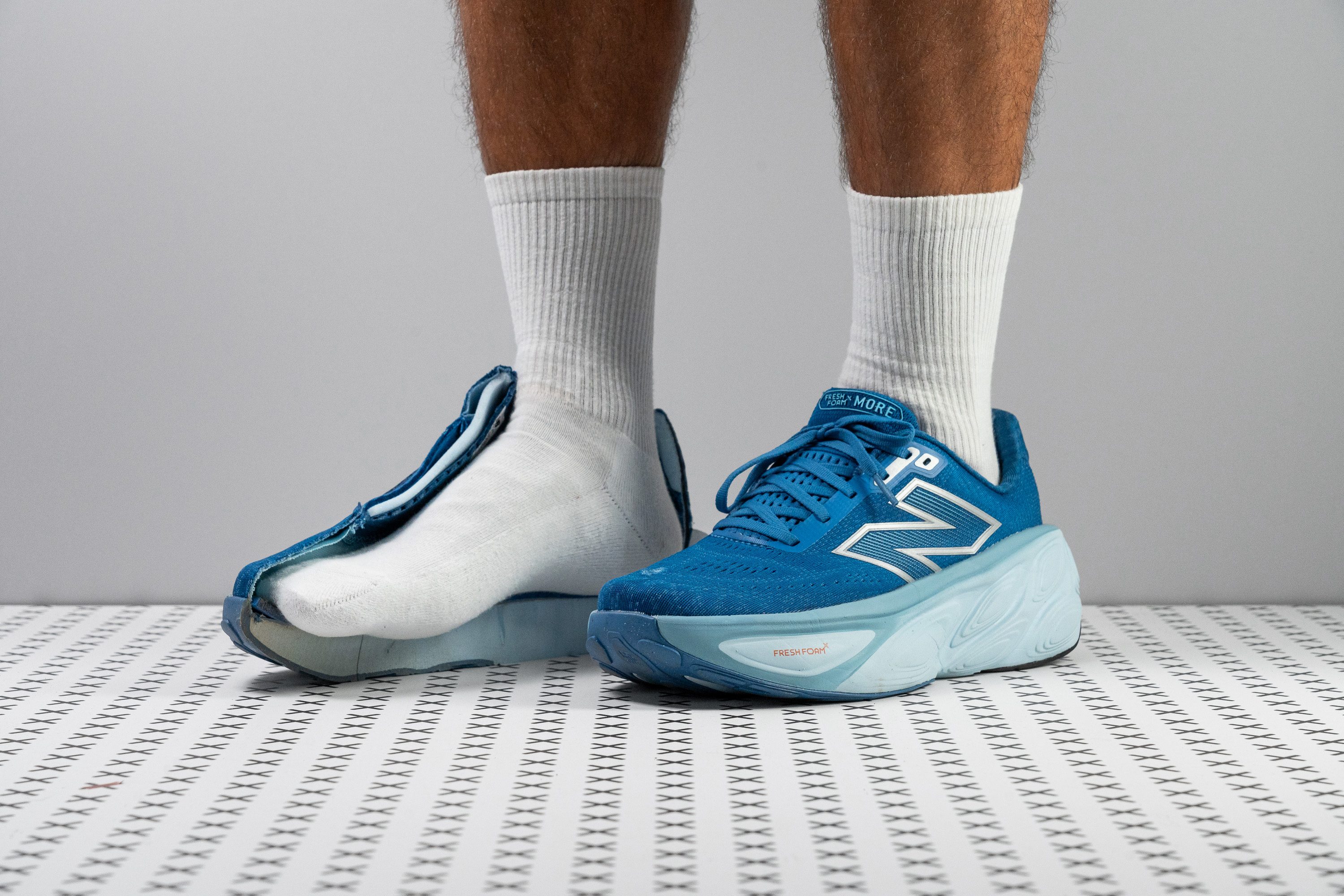




















































What makes it the best?
The New Balance Fresh Foam X More v5 displays consistent reliability in our runs, and lab results validate it’s both comfortable and stable, and both grippy and durable. It offers the deep cushioning, support, and confidence we need day in and day out, without burning through the outsole quickly. Therefore, it’s our best daily trainer among high shock-absorbing running shoes.
More v5 offers generous comfort and muscle protection through its massive 42.1/34.3 mm stack. Not only is there an abundance of foam, but the cushion itself can reduce the forces of landing. Our shock absorption test shows high results of 156 SA in the heel and 133 SA in the forefoot, confirming its capacity to keep our legs fresh.
Even with its plushness and height, we never felt like losing balance since the midsole sidewalls and broad platform assisted us. We measured the base at 124.6/105.0 mm, among the widest we’ve seen in the lab.
Besides its stable midsole, the strong traction of the outsole keeps our strides controlled. Testing it in the lab, we recorded a strong friction score of 0.55, making More v5 17.0% grippier than average. We can easily tackle rainy days with confidence. Plus, we proved the rubber can handle daily mileage since our Dremel’s damage is minimal at 0.7 mm.
However, its height made the ride stiffer than we'd prefer. Runners looking for a more natural and versatile ride should go for more flexible trainers.
Pros
- Exceptional all-around comfort
- Ultra-plush cushioning
- Ideal for slow long runs
- Great cushion-to-price ratio
- Remarkable stability for its size
- Superb lockdown
- Durable and high-grip outsole
- Well-designed rocker geometry
- Lots of improvements from v4
- Dependable grip
Cons
- Heavier than its predecessor
- Snug fit
- Maybe even too plush!
- A bit stiff for casual wear
Best high shock absorption running shoes with plush foam
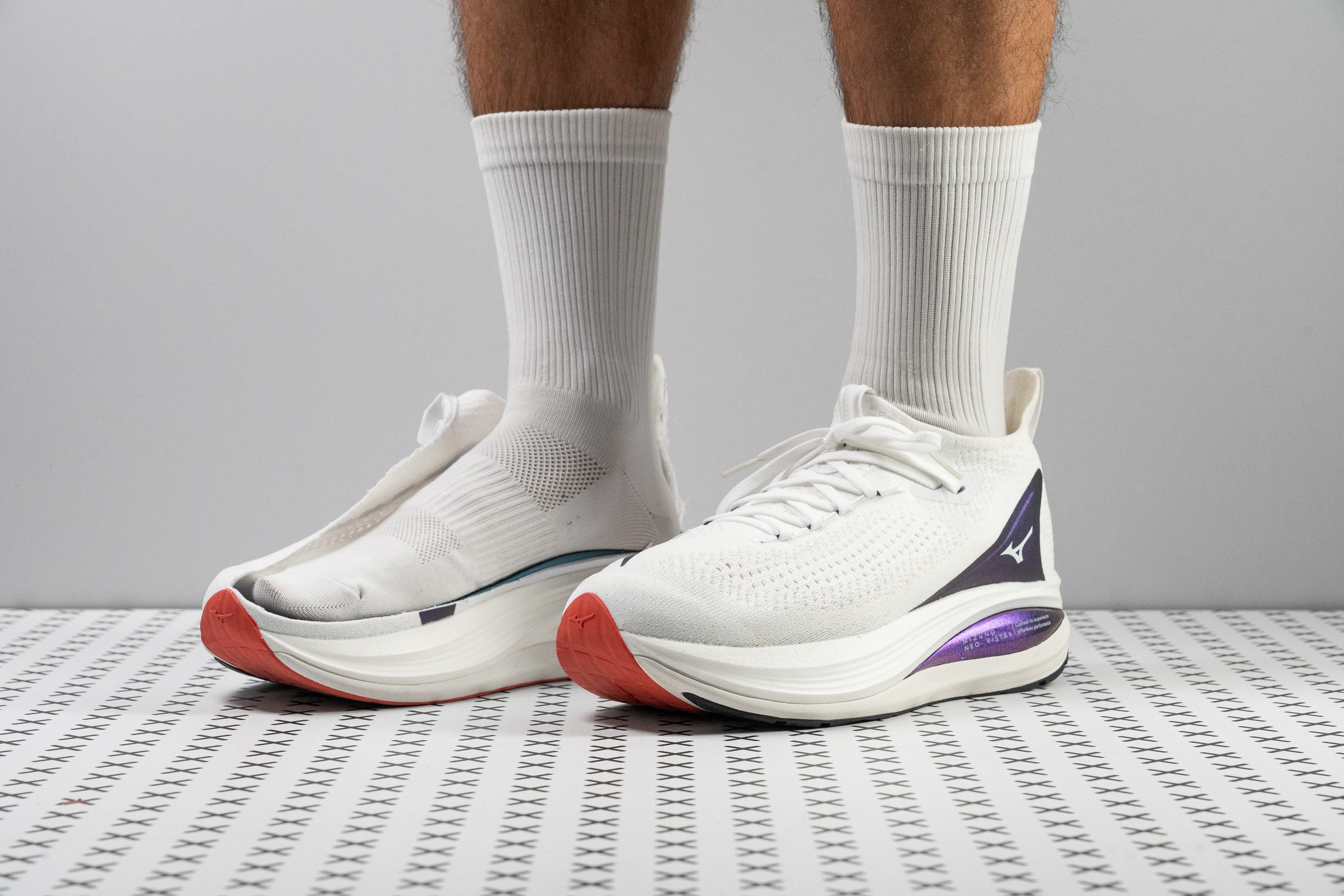
















































What makes it the best?
The Mizuno Neo Vista 2 goes big and deep in cushioning, offering an ultra-soft ride that rises above the rest. Backed up by our lab results, it has the best plush foam among high shock-absorbing running shoes, combining maximum height and softness to minimize impact on our bodies. Despite its thick platform, it boosts comfort further through its light weight and flexible construction.
We instantly felt at home in Neo Vista 2’s pillowy-soft midsole, recording heavenly levels of shock absorption with 170 SA in the heel and 137 SA in the forefoot. Only a few shoes can match the impact protection this shoe offers.
Its skyscraper height of 46.0/37.5 mm takes away all harshness of the ground, especially in the midfoot area, where there is extra cushion because of the shoe’s curved rocker. Despite its thickness, Neo Vista 2 manages to keep its weight below average at 9.3 oz (264g).
It also takes minimal effort to bend the shoe, making it ideal for daily wear. In our flex test, it emerged 11.2% more pliable than average.
Since one shoe can’t cater to all, we find that this trainer’s average energy return makes it ideal for recovery days. Those seeking high performance won’t be satisfied with this shoe.
Pros
- Massive stack height
- Super-plush Enerzy NXT foam
- Perfect for long runs
- Lightweight for its huge size
- Good durability
- Breathable knit upper
- Roomy toebox height
- Insanely fun!
Cons
- Not enough energy return
- Price hike feels unjustified
- Not stable for heel strikers
Best high shock absorption supershoes
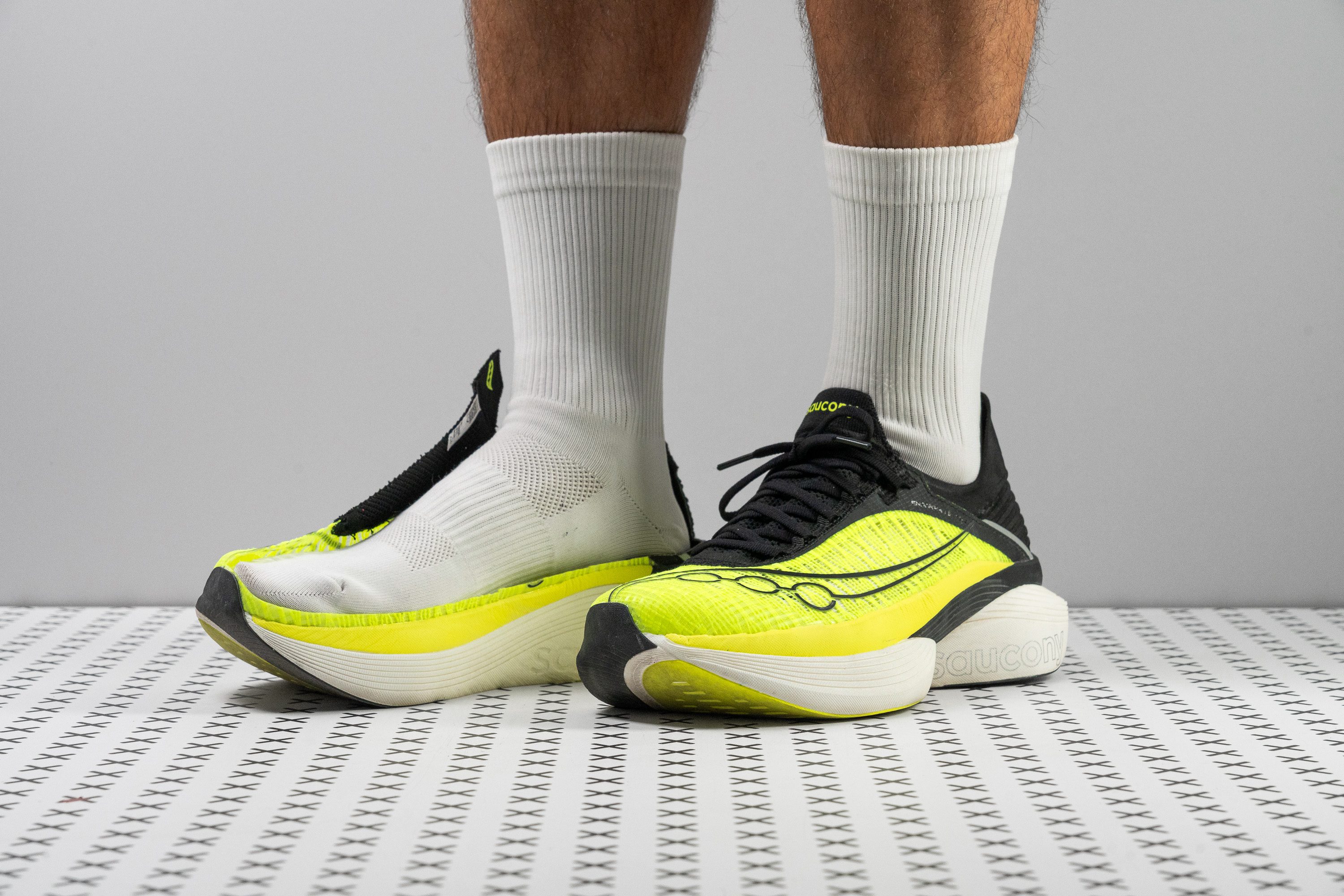















































What makes it the best?
The Saucony Endorphin Elite 2 packs maximum power and cushioning in a minimal build, making it our ultimate supershoe in the shock absorption running shoe category. We instantly recognized its powerhouse nature, but the propulsion it showed in our lab tests is off the charts. And, it does so without foregoing protection and plush comfort.
The Endorphin Elite 2 pumped our adrenaline levels with the speed and unmatched energy it delivers. We verified its explosiveness by recording one of the highest energy return scores in the lab: 80.6% in the heel and a massive 82.1% in the forefoot. The power lost in transition is so small that we’re able to maximize our output!
Massive launches need gentler landings, and the Endorphin Elite 2 delivers just that with incredible scores in our shock absorption test: 157 SA in the heel and 123 SA in the forefoot. Not only that, its luscious foam is 39.9/32.4 mm thick, consistently protecting our muscles from feeling beaten up.
What ties its elite status altogether is its extremely light 6.9 oz (197g) figure. It feels weightless on foot as it’s 25.7% below the average.
Unfortunately, we can’t recommend this racer to marathoners or wide-footed runners needing extra room in the toebox. There is a risk of pressure points or black toenails since it's tapered more aggressively.
Pros
- Record-breaking energy return
- Ultra-plush foam
- Fantastic shock absorption
- Addictively bouncy and fun feel
- Ideal for the marathon distance
- Durable and breathable upper
- Improved lockdown with knit tongue
- Stack height maxes out the legal limit
- Explosive, forward-driving ride
Cons
- A touch heavy for being an elite supershoe
- Budget-crushing price
- Lateral stability is extremely bad
- Lacks specific support for heel strikers
Best high shock absorption running shoes for beginners
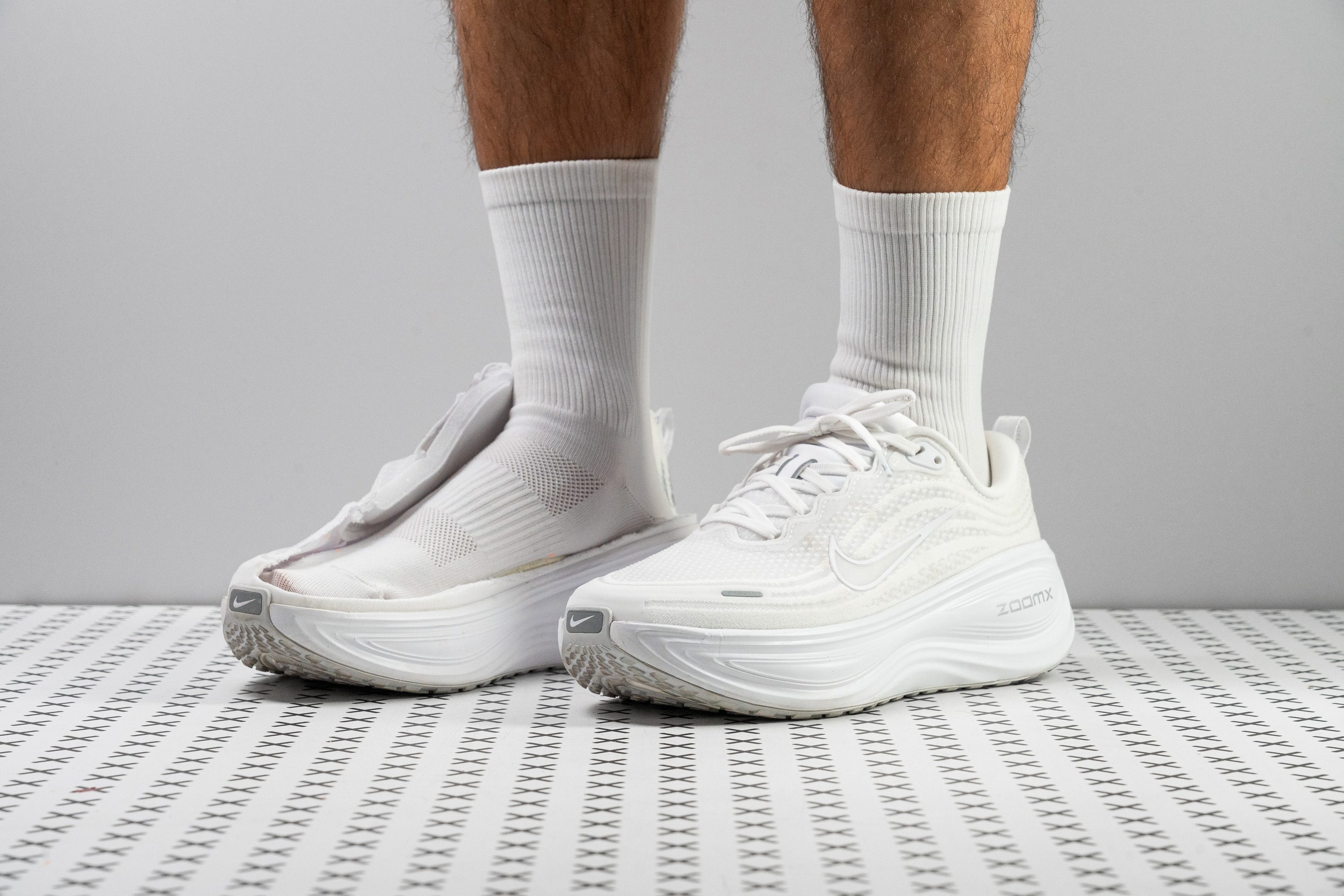












































What makes it the best?
The Nike Vomero Plus feels very forgiving to our muscles and joints with its monstrous yet gentle cushioning. With an added boost of support through its broad and rigid construction, it’s our best bet for beginners among high shock absorption running shoes we analyzed in the lab.
Mirroring the “Plus” in its name, its stack height is a plus-sized 42.3/32.7 mm. It erased any traces of the ground, while the foam itself reduces the forces of landing. We confirmed high levels of shock absorption in the lab, with impressive scores of 147/131 SA in the heel and forefoot, respectively.
Every landing is pure bliss, while every takeoff feels pleasantly springy. We’re delighted to record strong energy return scores of 67.1% in the heel and 68.8% in the forefoot, outperforming many daily trainers we’ve tested. This shoe can definitely power us through tempo sessions.
Vomero Plus ensures it can support tired feet through its tall sidewalls and broad platform. Measuring 117.0/99.2 mm, it’s easier to maintain our balance and control our footing. The midsole is highly resistant to ankle twists, proven by its solid 4/5 torsional rigidity score.
Unfortunately, it emerged stiff longitudinally, too, which means it takes effort to bend our feet. Those who prefer a more natural ride should look for alternatives.
Pros
- Full ZoomX midsole provides energetic bounce
- Outstanding shock absorption in both heel and forefoot
- True high-stack design
- Premium comfort from walking to long runs
- Strong durability
- Great pick for easy days
- Midsole resists cold very well
- Comfortable heel counter
- Solid Bondi alternative inside Nike
Cons
- Heavier than it should
- Snug fit and narrow toebox
- Non-gusseted tongue
- Traction still needs improvement
High shock absorption running shoes with the best value













































What makes it the best?
After runs and lab tests, the ASICS Dynablast 5 takes the lead as the best value high shock absorption running shoe. It offers maximum protection and deep cushioning for its low $120 price, while showing strong all-around durability. We keep reaching for this pair since its light and flexible construction makes it comfortable for daily wear.
Even with its accessible price, Dynablast 5 exceeds the lab average in terms of height and impact protection. Our caliper reveals that its 39.4/21.8 mm stack height can reduce the load on our joints and muscles with high shock absorption scores of 156 SA in the heel and 127 SA in the forefoot.
Despite its thick cushioning, Dynablast 5 maintains a below-average weight of 9.3 oz (264g) and improved flexibility of 4.6% compared to average. Together, these elements create a smooth and effortless ride since they flow with our movements.
While many shoes sacrifice longevity for price, Dynablast 5 does the complete opposite. In our Dremel test, it exceeds the respective averages with strong scores of 4/5 in the heel padding and toebox. Plus, it sustained only 0.8 mm of wear in the outsole, 20.0% less than average, confirming it’s long-lasting.
Ironically, the Dynablast 5 feels far from dynamic with its underwhelming energy return. We can’t recommend this pair to performance-driven runners.
Pros
- World-Class shock absorption
- Maximalist cushioning at an affordable price
- Ideal for beginners
- High durability ratings
- Exceptional value
- Stable forefoot platform
- Drop suits all footstrikes
- Breathable upper
- Can handle long runs with ease
Cons
- Moderate-to-low energy return
- Heavier than Novablast 3
- Low volume toebox
Best high shock absorption running shoes for trail
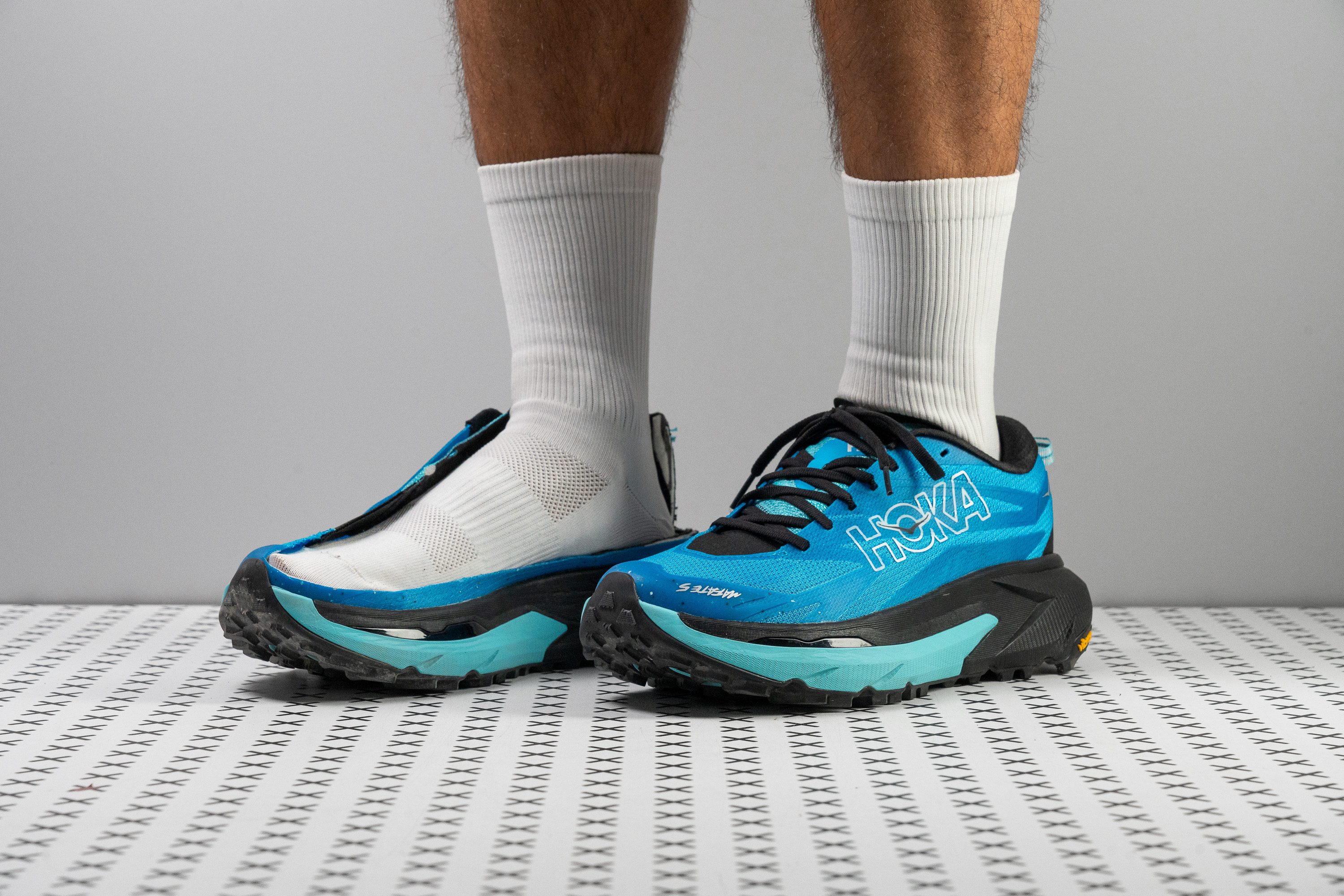
















































What makes it the best?
Pros
- Even more plush cushioning
- Enhanced energy return
- Roomier fit than most HOKA models
- Durable yet breathable knit upper
- Built for long ultras
- Outstanding Vibram Megagrip rubber
- Same price as the previous version
- Stable for its tall stack
- Solid durability
Cons
- Heavy (and heavier than version 4)
- Tongue design could be much better
- Could be too stiff for some
Shock absorption, also known as shock attenuation, refers to a shoe's ability to absorb impact during landing effectively. The better it is, the less strain is put on the legs because they have to deal with less impact forces. As always, there’s a caveat, and that’s why we go down the rabbit hole.
Why is shock absorption so important in running?
Because it saves runners’ legs from unnecessary impact forces. On the long run (literally and figuratively), these forces accumulate, so even if you don’t feel them immediately, after a while, there’s a lot of stress that results in (premature) muscle fatigue. This fatigue can be postponed, reduced, or avoided with good shock absorption.
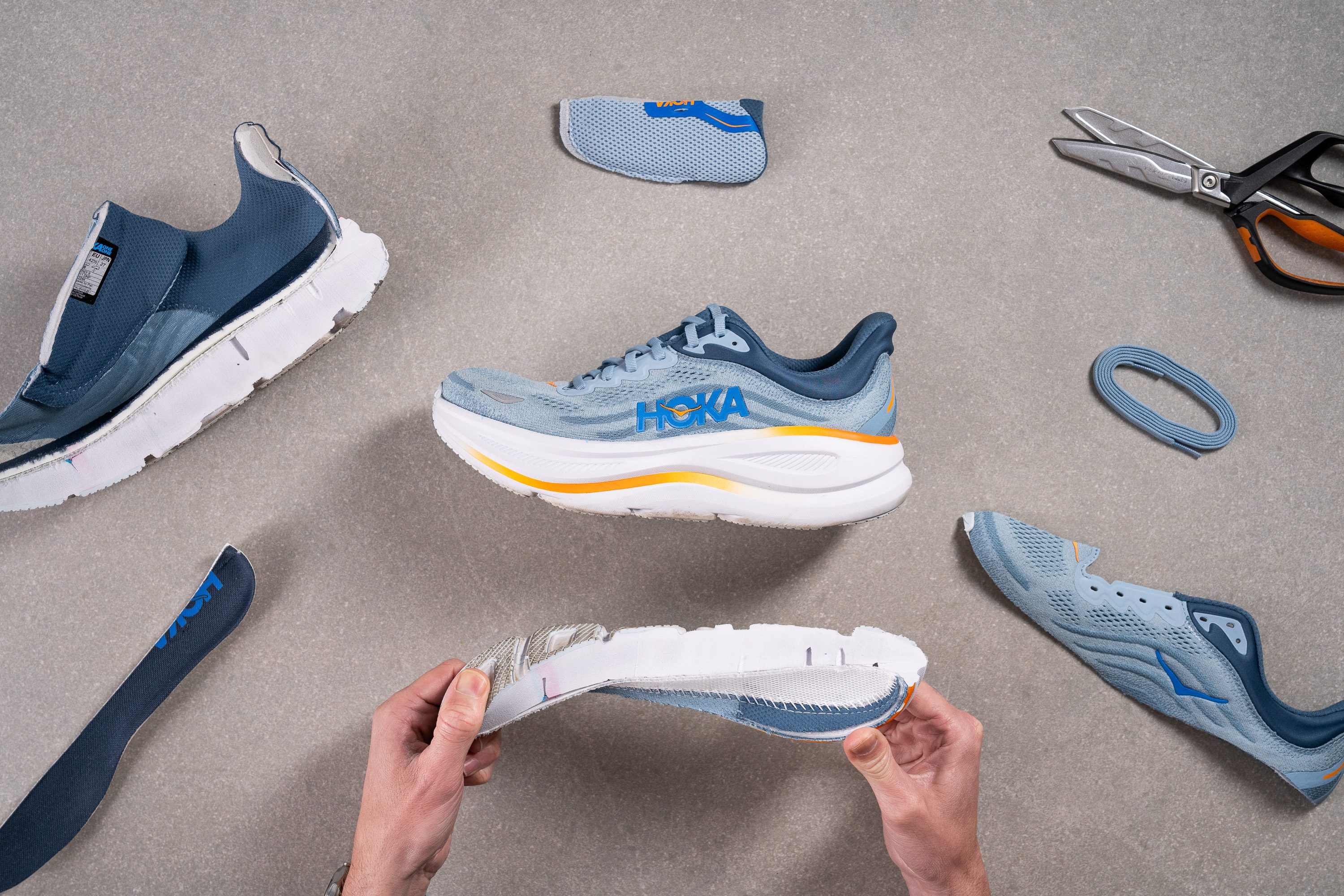
Best shock absorption is usually found in so-called supershoes (lightweight, high energy return, high shock absorption), and these shoes are known for their leg-saving features. They improve the race time but also lead to less muscle fatigue.
4 features of running shoes with high shock absorption
Here are 4 things you should know about running shoes with high shock absorption:
- They scored a minimum of 130 SA on our shock absorption test.
- They are most likely high-stacked and soft. 79% of running shoes with high absorption in our database are softer than average and 85% have a heel stack height of 35 mm or higher. Running shoes that are closer to the ground (low stack height) don’t have enough foam to offer high shock absorption.
- High shock absorption is very often found in daily trainers. These shoes usually don’t have above-average energy return, given the pace they are made for.
- High shock absorption is ideal for heavy runners, those with bone stress injuries, and for runners doing long distances (half marathon, marathon, ultra). Other runners (average ones) are doing best with moderate shock absorption.
Measuring shock absorption in RunRepeat lab
To test shock absorption in running shoes, we follow the ASTM F1976-13 methodology. For this test, we have to remove the upper, so that the machine can reach the heel and the forefoot with nothing in the way.
Measuring shock absorption [ASTM F1976-13 protocol]
We lock the shoe in place and then drop an 8.5 kg mass from a height of 50 mm on the forefoot and the heel. This results in a total energy input of 5 J. We perform 30 repetitions per location and take into account only repetitions 26-30 for calculating the average shock absorption
The first 25 repetitions serve as a natural break-in of the shoe. Between each repetition, there is a 2-second break. It’s also important to highlight that we test shock absorption both and the heel and at the forefoot. This is important because runners can then find out how protective the midsole is where they land, be it at the heel or the forefoot.
As in the stack height tests, the locations where the shock absorption test is performed are defined in the WorldAthletics guidelines: we drop the mass exactly at the 12% and 75% of the inner shoe length.
Do not confuse shock absorption with midsole softness
Shock absorption tells us how protective the midsole is, which means how good it is at dampening the impact forces. Midsole softness, on the other hand, tells us only that: how soft the midsole is.

You may think that softer shoes always have higher shock absorption and vice versa, but that is actually not true. Let’s look at the numbers:
- 79% of high-shock-absorption running shoes have below-average softness
- The rest, 21% belongs in the moderate-softness group. No firm shoes per se, but some midsoles scored as high as 28 HA on our durometer test (this is Mizuno Wave Rider 28 with 131 SA at the heel).
- On the other hand, examining low-shock-absorption running shoes reveals shoes that scored below average, with some as low as 13.5 HA (this is Adidas Pureboost 23, which also scored low on the shock absorption test with only 108.4 SA).
Which runners should choose running shoes with high shock absorption
What is actually high shock absorption? Based on our lab data, anything higher than 130 SA.
High shock absorption means that the midsole is doing a great job at dampening the impact forces and this is needed a lot for:
- Runners who run long distances. Be it a long slow distance (LSD) or an ultra, it’s the pounding that builds up. Runners who run half marathons and marathons (the longer the distance, the greater the need for high shock absorption)
- Runners who have (or have had) bone stress injuries. It’s simple math: have a midsole that will deal with more impact force so that your bones and joints don’t have to.
- Heavy runners; their bones, tendons, ligaments, and joints will greatly appreciate all the help they can get, and a high-shock-absorbing midsole is heaven-sent in that regard.
High shock absorption for forefoot strikers
In general, when we talk about shock absorption, we talk about the measurements done at the heel. We do so because the majority of runners are heel strikers and even forefoot strikers end up landing at the heel when doing (very) long distances due to fatigue.
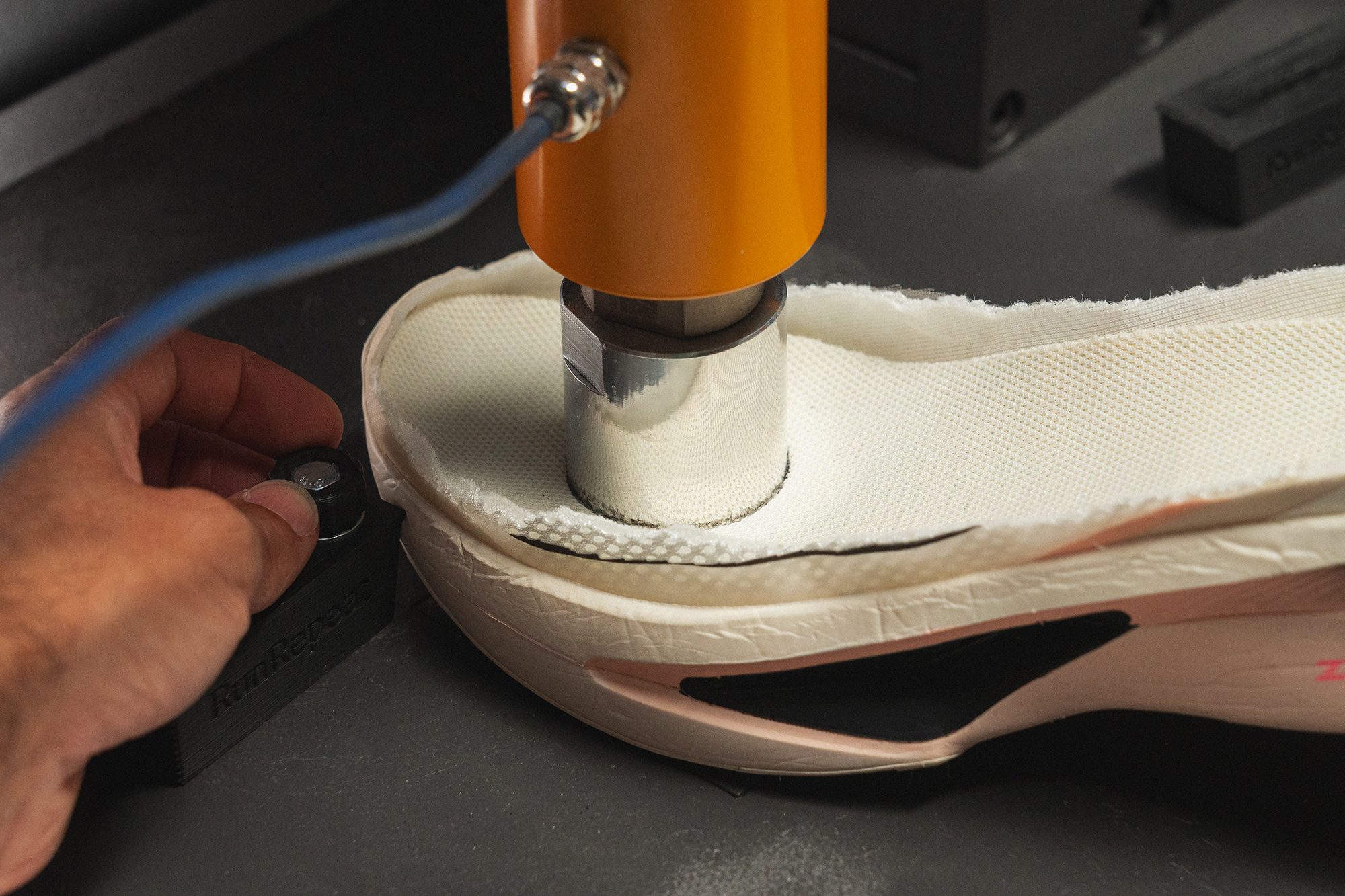
This, in no way, means that we forgot forefoot strikers. In case you are one, here are running shoes to look at!
When moderate shock absorption is recommended
Moderate shock absorption falls within the range of 110-130 SA. This is exactly what works best for the majority of runners! Most recommended daily trainers shine in this range. This means that moderate shock absorption is ideal for runners who are running at average paces and distances. You can expect the best combination of protection, comfort, and versatliy in running shoes with moderate shock absorption.
What is low shock absorption actually good for?
First, it’s great for short races where you prioritize energy return, better cadence, and lower weight. Second, it’s recommended for runners who want to be closer to the ground, experience a better ground feel, and strengthen their foot muscles. This is because low shock absorption is found in running shoes with lower stack heights and with lower heel drops.
As you can see, the heel drop is lower and so is the stack height. To learn more about the effects of heel to toe drop on muscle activation, we wholeheartedly recommend our Ultimate guide on heel to toe drop
As we know, low heel-to-toe drop is great for strengthening the foot muscles as it activates them more, together with the Achilles and maybe even calves (depending on the height of the drop, of course). Running shoes with low shock absorption are often found in rotations that belong to runners who want to work on their running form, strengthen all foot and leg muscles equally (by varying drop, stack height, shock absorption), and who are maybe struggling with injuries where muscle strengthening is a must.
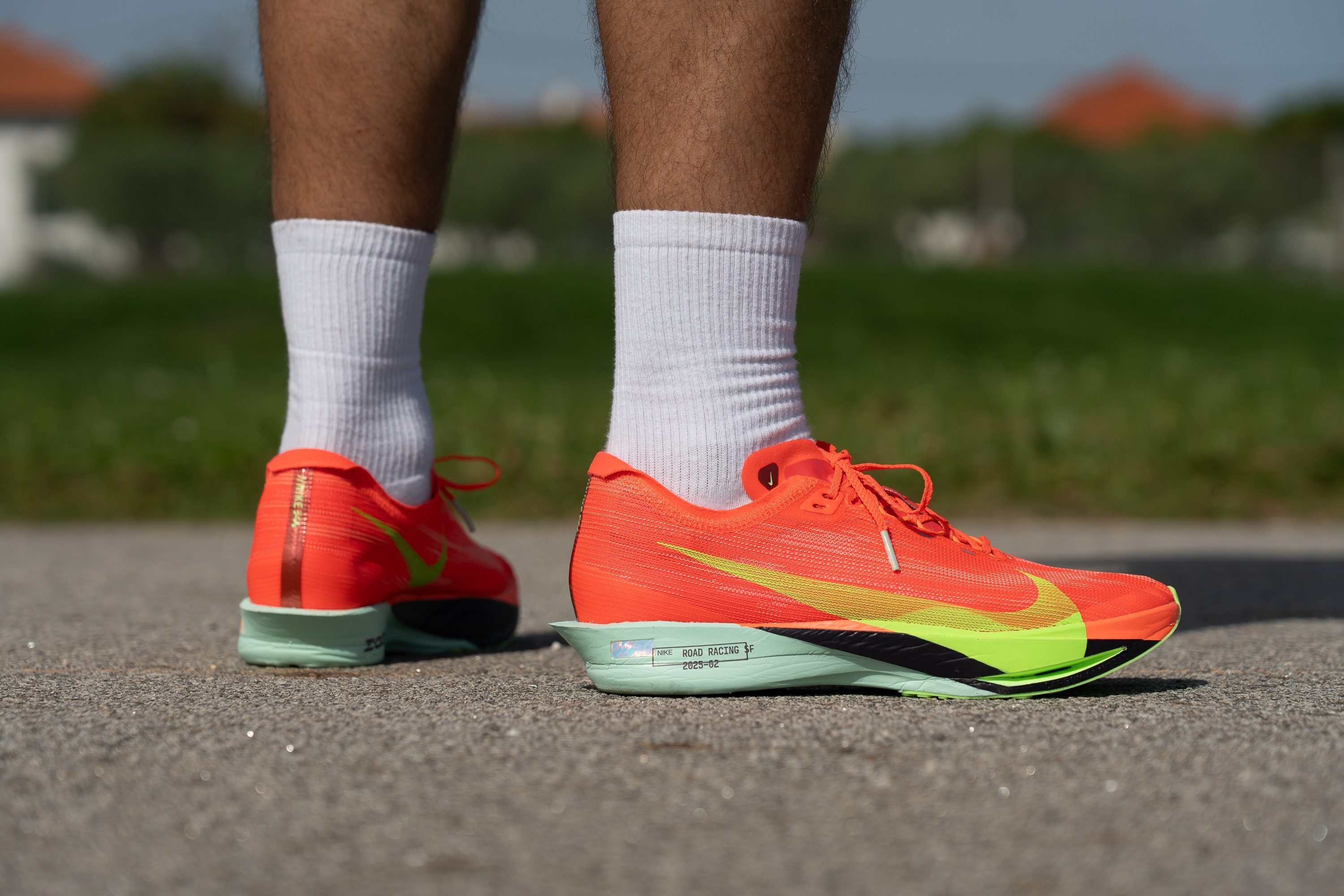
Low shock absorption is also found in very fast, short-distance race shoes. No wonder, given that here, the priority is: high energy return, low weight, and running efficiency! Below, we see examples of shoes with high energy return, low-to-moderate shock absorption and low weight:
Shock absorption vs. energy return
We often present our lab results from shock absorption together with energy return. This is not only because they are tested at the same time. These features are completely different, yet it’s always good to look at both at the same time. What good is a crazy amount of protection if the midsole is dull and you want to do tempo runs? No good.
|
Shock absorption |
Energy return |
Shoe experience |
||
|
High |
+ |
Low |
= |
Soaks up the impact well but is not responsive. Feels dull and tiring. For daily and recovery runs. |
|
Low |
+ |
High |
= |
Fast and responsive, but not protective. For shorter distances only. |
|
High |
+ |
High |
= |
Protective and bouncy running shoe! |
It’s important to take pace into account because the faster you run, the higher the energy return (on average) in running shoes. Shock absorption also increases but not nearly as energy return. We’ve analyzed this in great detail in this guide.
Below, we will list examples for these groups of shoes: combinations of low/high shock absorption and low/high energy return.
Shock absorption vs. stack height
The higher the shoe, the better the shock absorption! Given that we already used 3 shock absorption groups (low, moderate, and high), we’ll do the same here and compare the average heel stack heights:
- Running shoes with low shock absorption (<110 SA) have an average heel stack height of 28.8 mm;
- shoes with moderate shock absorption (110-130 SA) have an average heel stack height of 34.1 mm;
- and, finally, shoes with high shock absorption (>130 SA) are on average 38.0 mm tall at the heel.
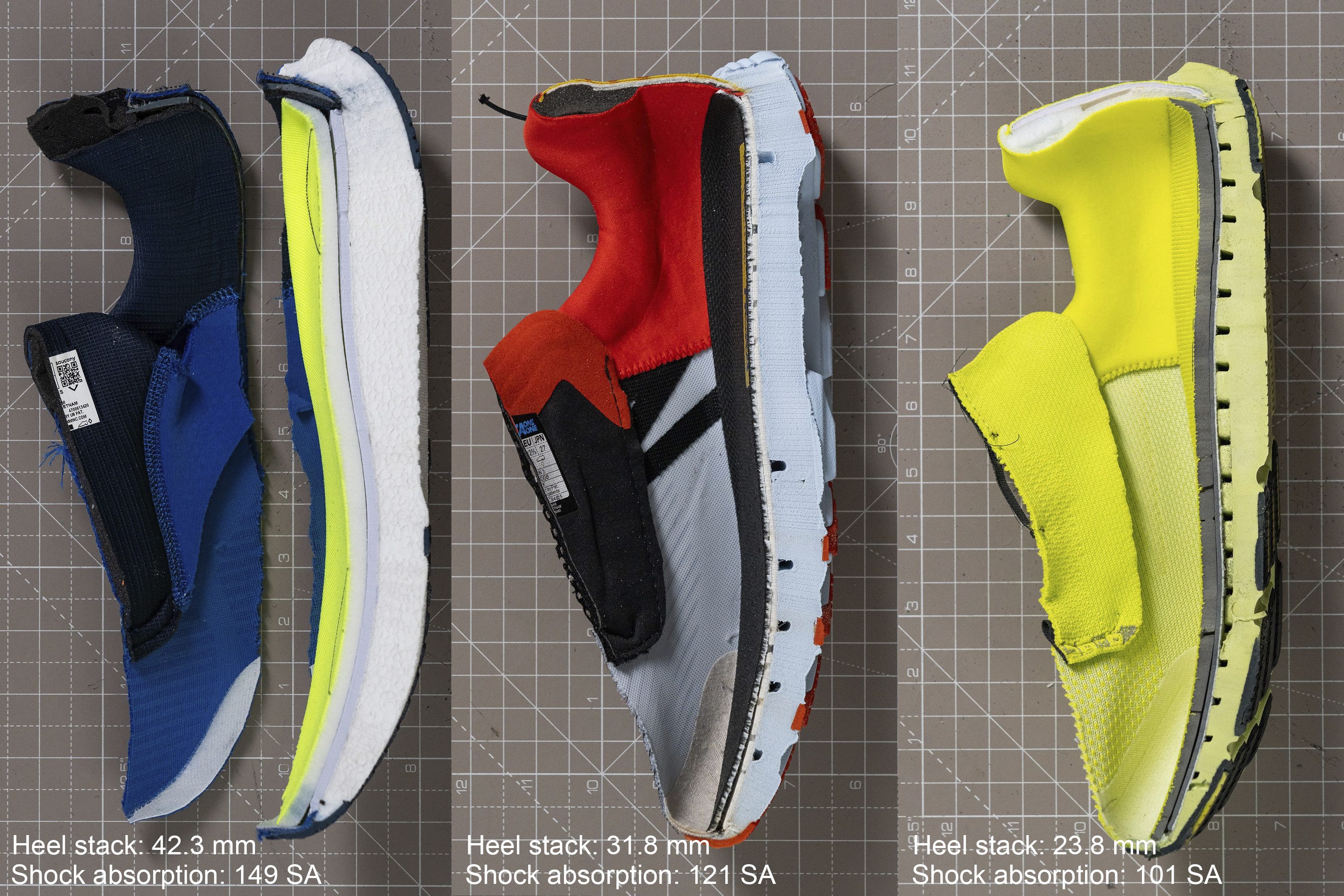
Saucony Triumph 23, Hoka Rincon 3, Altra Escalante 3
How to recognize running shoes with the best shock absorption?
Short answer: you can’t. Longer answer: Visually, it’s almost impossible to recognize different foams. However, knowing which foam it is may significantly help you.
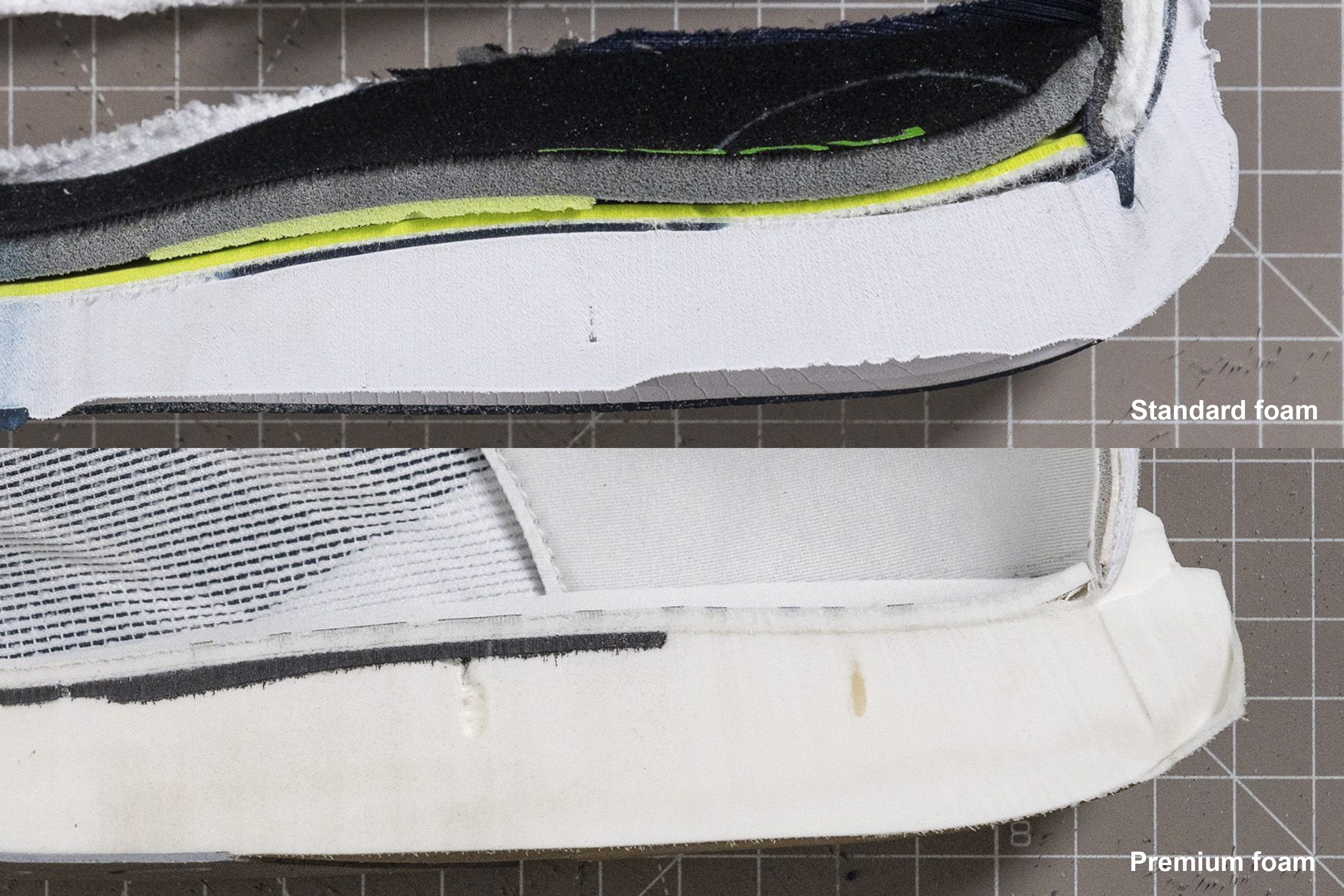
Premium foams have higher shock absorption and energy return than standard foams. And, not the best rule, but the higher the price, the better chances of nailing a supershoe with great shock absorption and energy return. To learn which foams are premium and which ones are standard, look at our detailed overview in the Ultimate guide on running shoe foams.
